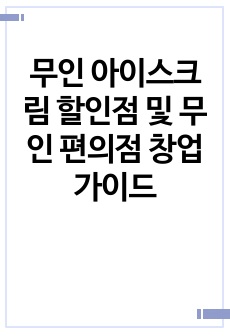IS THIS AN AUTHENTIC PLACE? THE INFLUENCE OF AUTHENTICITY IN THE TOURIST´S DESTINATION SELECTION
* 본 문서는 배포용으로 복사 및 편집이 불가합니다.
서지정보
ㆍ발행기관 : 글로벌지식마케팅경영학회(GFMC)
ㆍ수록지정보 : Global Marketing Conference
ㆍ저자명 : Jeanne Rosalina Botelho Maciel, Eliane Cristine Francisco Maffezzolli
ㆍ저자명 : Jeanne Rosalina Botelho Maciel, Eliane Cristine Francisco Maffezzolli
영어 초록
The search for authenticity is a subject that has become very common in different areas of social knowledge in recent years. The key point is to recognize what makes something authentic and which factors could influence this perception. Although the academia not yet been able to reach a consensus on the definition of what makes something authentic, some authors propose this concept in the marketing of goods and services (Beverland 2005, 2006; Beverland, Lindgreen & Vink, 2008; Alexander, 2009; Molleda, 2009; Kadirov, 2010). We propose to extend this concept to the place branding context. Destinations can be authentic when they offer tourists unique experiences. These could be interesting to be branded in order to increase tourism demand. Tourism is a sector that, despite of the uncertainties of the global economic scenario, continues to grow. According to the World Tourism Organization, in 2014 there was an increase of 4.3% in the number of tourists who traveled the world, compared to the previous year. This represents 46 million more people that revisited a destination or traveled to new places. In financial terms, the global move rose to US$ 1.5 trillion in 2014 (UNWTO, 2015). The economy of many countries depends on tourism, both in terms of GDP and employment. For instance, Seychelles, Cape Verde and Malta have respectively 21%, 16% and 13% of their GDPs coming from tourism. The same source also reveals the list of the most competitive countries in the world in terms of tourism. The top four countries are Spain, France, USA and England (WEF, 2015). Currently, considering the competitiveness in the tourism sector, it is increasingly critical the need for destinations which present a singular identity and positioning. Offering excellent options of accommodation, good attractions and historic buildings are no longer differentials. Thus, place branding can be a powerful tool to face the competitive tourism scenario (Gilmore & Pine II, 2007). This study aims to promote a measurement scale for place authenticity and verify the influence of this concept for the tourist’s destination selection.In modern societies, individuals search for their uniqueness. Taylor (2003) points out that one of the decisive aspects to be an authentic positioning is the definition of their own identity, that is, the set of attributes such as personality, physical characteristics and perception of themselves. The dilemma of authenticity and inauthenticity is already considered one of the key points of western society (Grayson & Martinec, 2004). Considering the universe of brands, an authentic brand is associated to the consistency between brand identity and brand personality. It is related to the elements and/or characteristics, which are unique. Previous published studies (Beverland, 2006; Barreto, 2008; Molleda, 2009; Kadirov, 2010; Napoli et al. 2014) proposed some dimensions to define the composing elements for authenticity perception; however, they were more focused on product authenticity. Some dimensions include product tradition, manufacturing process, product design, certifications and guarantees, price positioning, product originality, cultural symbolism, product quality, nostalgic perception and brand credibility, among others. These dimensions are not directly applicable to touristic destinations.
Considering this literature gap, we decided to propose a new measurement scale specifically for places (touristic destinations). In the case of tourists, Gilmore and Pine II (2007) state that this kind of consumers search to live unique and authentic experiences. These authors emphasize that the choice of a place to visit can be considered personal reaffirmation, in the sense of having a certain personality or belonging to a particular group. The proposed model for this study states that place authenticity is guided by place tradition and place legitimacy and plays a mediating effect from place image to destination selection. For place image, we considered the natural characteristics of a touristic destination, the quality of services and the original manufacturing production of that place. These dimensions also came from the qualitative steps of this research. Previous studies (Selby & Morgan, 1996; Govers & Go, 2009) emphasize the positive impact of place image to increase consumer’s visiting desire. Before access destination selection, place image plays an important role for place authenticity perception, being that the core evaluation about a place. The first three hypothesis are:
H1: The greater the perception about natural characteristics of a place, the greater the perception about place authenticity.
H2: The greater the perception about the quality of services, the greater the perception about place authenticity.
H3: The greater the perception about original manufacturing production, the greater the perception about place authenticity.
Destination selection for vacation is related to consumer’s choice about the next place to go during his/her free time. Literature reveals that consumers’ perception about a place can be decisive for choosing or not a place for vacation (Gilmore & Pine II, 2007). Hypothesis 4 assumes that:
H4: Place authenticity has a positive and significant impact on consumer’s destination selection.
This study is organized in two main research stages. The first was dedicated to the developing a place authenticity measurement scale. We followed Netemeyer, Bearden and Sharma (2003) steps that include literature review, qualitative and quantitative steps. After the literature review we ran two qualitative studies with four in-depth interviews with tourism managers and eight in-depth interviews with consumers. Managers’ criteria selection was strategic public and private functions. Consumers’ criteria considered: age, gender and personal finance responsibility. The main objective of these steps was to collect more information about “what makes a place authentic” and “how we can define place image”. Initially 32 items were proposed, being 12 for place authenticity and 20 for place image. The first survey with 152 respondents was used to test the proposed scales. The second stage was defined by another survey with 152 valid respondents. We adapted from Napoli, Dickinson, Beverland, and Farrelly (2014) a 3-item scale for destination selection. The main objective of this last step was to retest the measurement scale with a new sample and test the proposed model using structural modeling equation. We used a 10-point agreement scale for all constructs. Qualtrics solutions to collect data were used in both surveys.
The qualitative approach and the literature review were relevant to propose some items to measure place image and place authenticity. Previous studies emphasized the power of place image for tourism managers in order to increase destination desire for potential consumers (Selby & Morgan, 1996; Govers & Go, 2009). Echtner and Ritchie (1993) written one of the first manuscripts to promote a measurement scale to place image. It was a very robust proposition that included attribute-based images, holistic impressions, and functional, psychological, unique and common characteristics, considering a combination of structured and unstructured methodologies. Although it is a very complex scale. We proposed a new scale by listening to managers and potential tourists (consumers) about what defines the main aspects of place image. Considering place authenticity, the main characteristics that define this concept are related to place tradition and history, which are related to culture, socio-economic history and how people recognize the uniqueness of its tradition. Place legitimacy is related to the originality of place characteristics and what makes this place unique.
In the first survey group, we had 152 valid responses, 64% women. Age range was from 26 to 37 years old. Main income rate (61%) was US$1600. Respondents should be the main responsible for the last destination choice. After a descriptive analysis, we ran an exploratory factor analysis (EFA) with varimax rotation and principal components as extraction method. Results showed the adequacy of the proposed scale (KMO=0.886, Bartlett's 4807.951, p<0.000). Four items were deleted considering the communalities verification (under 0.50). Three dimensions were defined: place image, which means the natural characteristics of a place (6 items, α=0.938), the quality of services (7 items, α=0.914) like infrastructure and the original manufacturing production of that place (4 items, α=0.807). Two dimensions defined place authenticity: place tradition (7 items, α=0.938) and place legitimacy (5 items, α=0.934).
In the second survey group, we had 152 valid responses, 62% women. Age range was from 26 to 37 years old. Main income rate (61%) was between US$1600 and US$2500. Respondents should be the main responsible for the last destination choice. The second stage included a new survey to confirm the measurement scales and test the proposed model. After descriptive analysis, we ran a confirmatory factor analysis (CFA). Results demonstrated the adequacy of the measurement model with tolerable goodness of fit (CMIN 403.114, DF = 142, CMIN/DF= 2.839, IFI=0.916, CFI=0.915, TLI=0.886, NFI=0.876, NFI=0.835, RMSEA=0.110). Probably sample size influenced the goodness of fit. We refined the measurement scale holding the essential items for each scale, considering CFA analysis (appendix 1). The final measurement proposed is defined for the natural characteristics of a place (4 items, AVE=0.80, CONF=0.93), the quality of services (4 items, AVE=0.84, CONF=0.95), the original manufacturing production of that place (3 items, AVE=0.76, CONF=0.90). Place authenticity: place tradition (4 items, AVE=0.77, CONF=0.93) and place legitimacy (4 items, α= AVE=076, CONF=0.93).
The proposed model was tested using the structural modeling equation. Results demonstrated to be suitable, with an acceptable goodness of fit (CMIN 310.219, DF = 97; CMIN/DF= 3.198; IFI=0.907, CFI=0.905, TLI=0.867, NFI=0.876, RFI=0.817, RMSEA=0.121). All hypotheses were confirmed. There is a positive impact from natural characteristics (β=0.371, p<0.000), quality of services (β=0.236, p<0.000) and original manufacturing production (β=0.597, p<0.000) on place authenticity (R²=92%). There is also a positive impact from place authenticity to destination selection (β=0.427, p<0.000, R²=18.2%).
Three major results emphasize the literature contribution of this research. First, the two-dimension place authenticity measurement scale. Place tradition and place legitimacy are the core concepts to measure place authenticity. Second, the influence of place image on place authenticity. This is useful for tourism managers since place image can be treated by marketing campaigns. The better the place image the greater the place authenticity perception. This relation explains 92% of the place authenticity construct. Thirdly, the relevance of place authenticity on destination selection. Public and private investments for some touristic place can be reinforced by marketing efforts in order to increase positive aspects for place image and place authenticity. Therefore, promoting increase in the percentage of destination selection. People are looking for unique experiences in unique places.
참고 자료
없음"Global Marketing Conference"의 다른 논문
 THE ROLES OF GREEN PACKAGING IN UGLY FOOD PURCHASE INTE..22페이지
THE ROLES OF GREEN PACKAGING IN UGLY FOOD PURCHASE INTE..22페이지 THE IMPACT OF INDUCED AWE ON ETHICAL TOURIST BEHAVIORS5페이지
THE IMPACT OF INDUCED AWE ON ETHICAL TOURIST BEHAVIORS5페이지 A BIBLIOMETRIC ANALYSIS OF SPIRITUAL TOURISM RESEARCH15페이지
A BIBLIOMETRIC ANALYSIS OF SPIRITUAL TOURISM RESEARCH15페이지 SOCIAL NETWORK ANALYSIS AND RESPONSE TIME TESTING: CONS..11페이지
SOCIAL NETWORK ANALYSIS AND RESPONSE TIME TESTING: CONS..11페이지 THE EFFECTS OF PARA-SOCIAL INTERACTION ON ONLINE CELEBR..3페이지
THE EFFECTS OF PARA-SOCIAL INTERACTION ON ONLINE CELEBR..3페이지 THE INFLUENCE OF OPINION LEADERS ON DAILY DEALS USER’S ..3페이지
THE INFLUENCE OF OPINION LEADERS ON DAILY DEALS USER’S ..3페이지 HOW IMMERSIVE RETAILING AFFECTS CONSUMERS’ URGE TO BUY:..6페이지
HOW IMMERSIVE RETAILING AFFECTS CONSUMERS’ URGE TO BUY:..6페이지 KEY TO SUPERSTARDOM IN A GLOBALISED MARKET: THE ROLE OF..6페이지
KEY TO SUPERSTARDOM IN A GLOBALISED MARKET: THE ROLE OF..6페이지 A POST-PANDEMIC LOOK AT TOURISTS’ PERCEIVED COOLNESS OF..4페이지
A POST-PANDEMIC LOOK AT TOURISTS’ PERCEIVED COOLNESS OF..4페이지 EXTRACTING OFFLINE RETAIL SHOPPING PATTERNS: OLLABORATI..5페이지
EXTRACTING OFFLINE RETAIL SHOPPING PATTERNS: OLLABORATI..5페이지


























